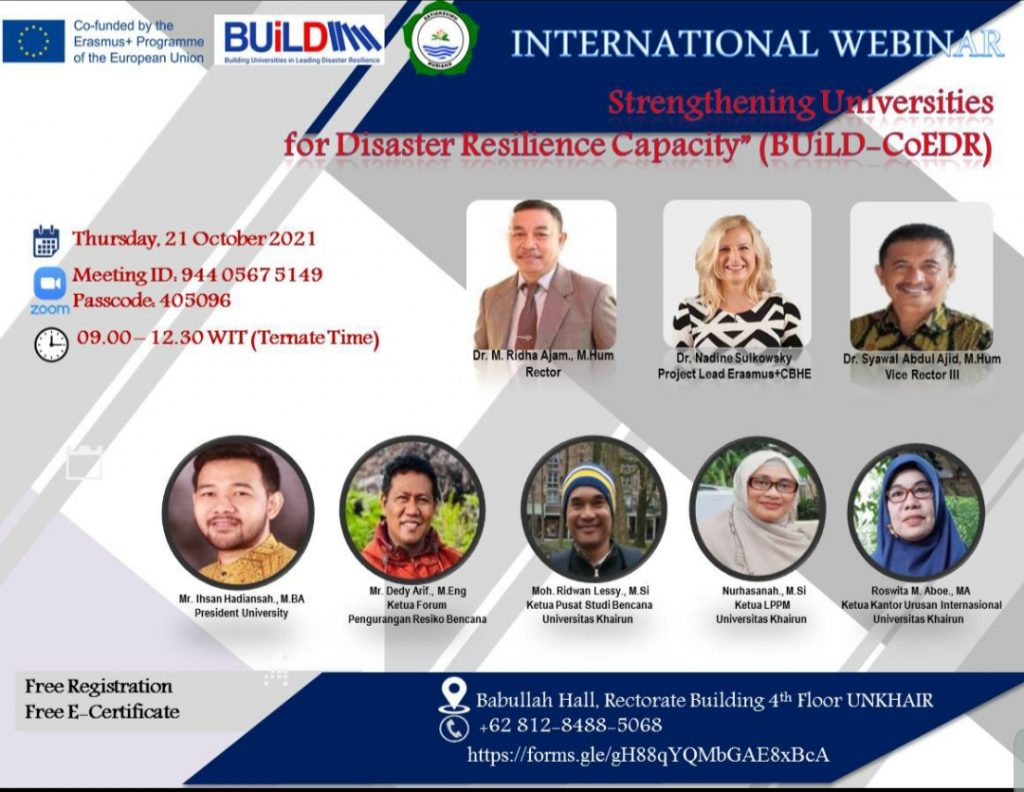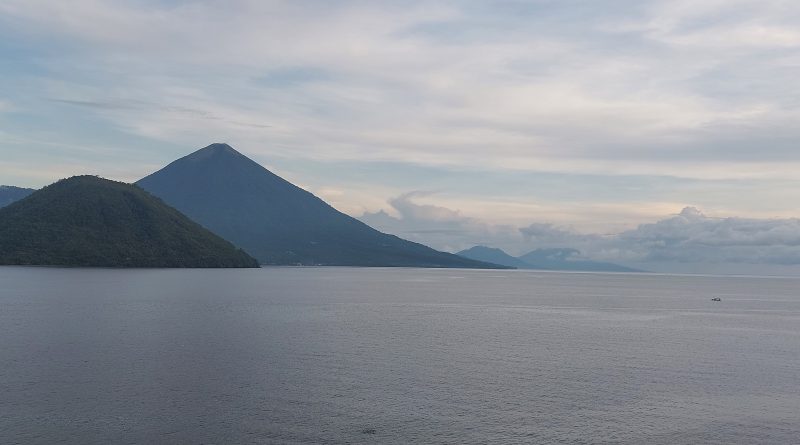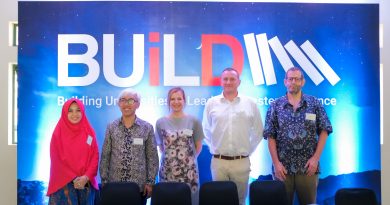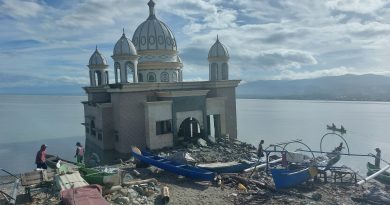Universitas Khairun holds webinar on strengthening universities for disaster resilience capacity
The geographical and geological location of Indonesia in the “ring of fire” has around 130 active volcanoes, some of which such as Mount Merapi, Sinabung, Gamalama, and Krakatau, are active volcanoes in Indonesia. In addition, Indonesia is also located at the confluence of three tectonic plates of the Pacific, Eurasian and Indo-Australian which can trigger earthquakes and faults at any time. Likewise, Indonesia’s position is right on the equator, flanked by two continents of Asia and Australia and two large oceans, Indian and Pacific, resulting in high rainfall which causes floods and landslides.
Almost all regions in Indonesia are prone to disasters, especially natural disasters, with varying degrees, as is the case with North Maluku Province. In the historical record of disaster events by the Indonesian Disaster Data and Information (DIBI), BNPB, the North Maluku Province has experienced 139 disasters in the last 20 years. Each disaster has an impact in the form of loss of life as well as loss and damage. These disasters include 9 (nine) types of disasters, namely floods, extreme weather, extreme waves and abrasion, earthquakes, forest and land fires, droughts, volcanic eruptions, landslides, and tsunamis. The type of disaster with the highest number of occurrences is flood, while the type of disaster with the greatest impact is an earthquake.
The Khairun University Disaster Study Center is part of the Building Universities in Leading Disaster Resilience (BUILD) Consortium program where the activities covered six main program consist of Disaster preparedness and response, Disaster training, Disaster curriculum, Disaster research, Fundraising, Educational, research and innovation network. By implementing this programme, universities can develop a Disaster Preparedness Campus in the form of a Center of Excellence in Disaster Resilience (CoEDR) as a model for disaster education for preparedness for all academics, educators, communities, and local governments.
Based on the above background, Khairun University through the CoEDR conducted a webinar on October 21st to introduce the centre to academic, universities, stakeholders, government, and community to gain impact, visibility and practicality on how university play an important role in leading disaster resilience. The objectives of the webinar were to increase understanding and concern within institution, academics universities, stakeholders, government, and North Maluku community about the existence of the centre at Khairun University, and to gain impact on how CoEDR accelerate three main pillars of education, which are education, research and community service related to disaster resilience.
Following a welcoming address by Rector Ridha Ajam, BUiLD Steering Group member Roswita Aboe (Khairun University) delivered the introductory speech. This was followed by an overview of the BUiLD Project by Project Lead Nadine Sulkowski (University of Gloucestershire), and insights into project implementation delivered Dr Ihsan Hadiansyah (President University) and Ridwan Lessy (Khairun University). Dedi Arif from the local Disaster Risk Reduction Forum joined as external speaker.






